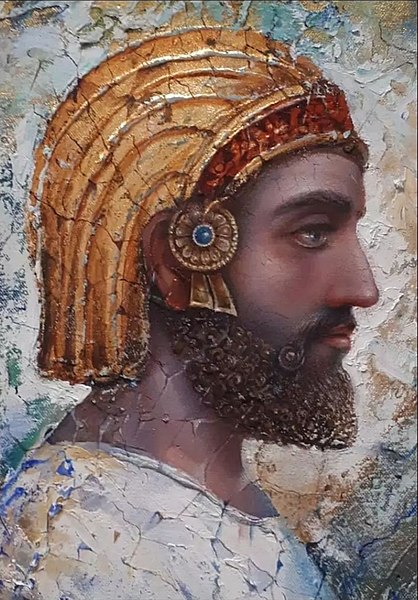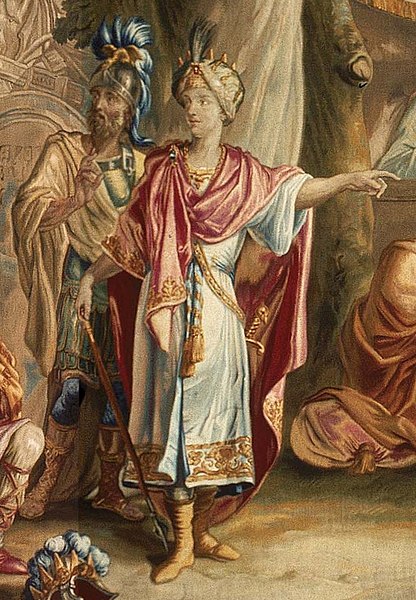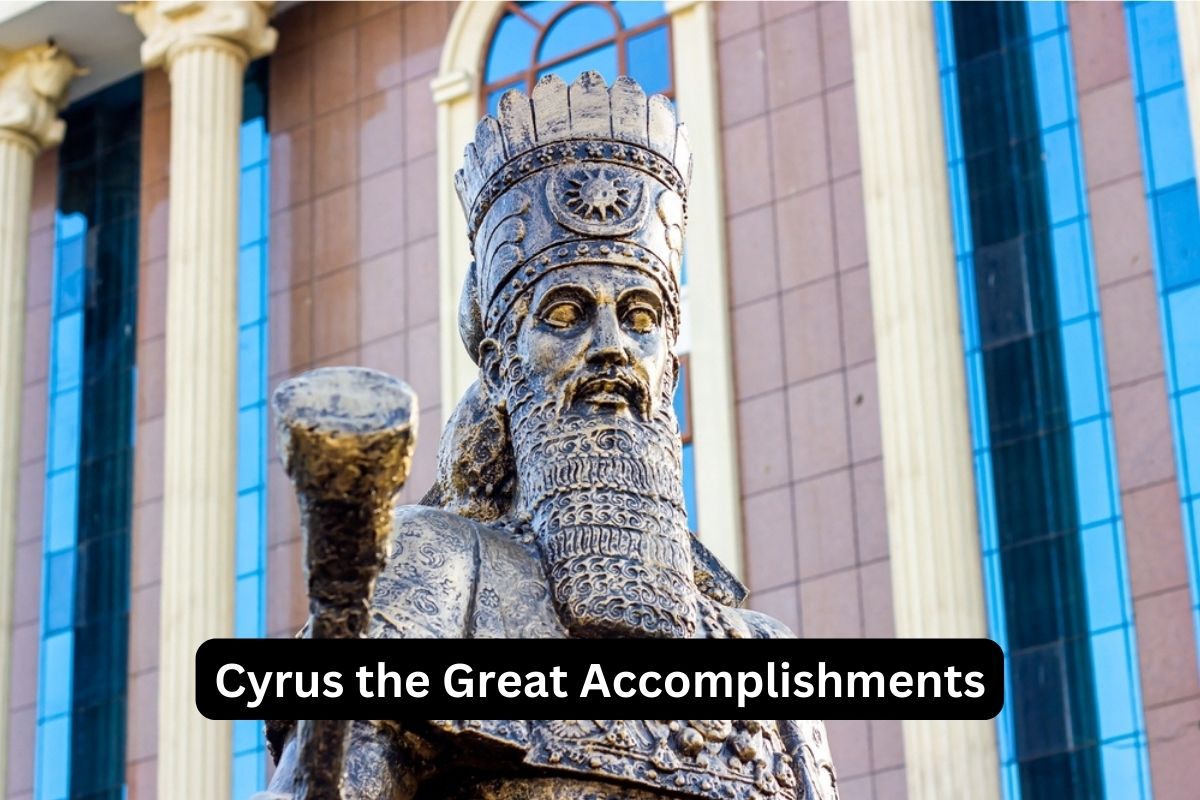Cyrus the Great, born around 600 BCE, was the founder of the Achaemenid Empire, one of the world’s first major empires. He was born in Anshan, a region in present-day Iran, and rose to prominence through his military and political acumen.
Cyrus is celebrated for his policies of religious tolerance and human rights, as exemplified by the Cyrus Cylinder, an early declaration of human rights. He conquered numerous territories, including Media and Babylon, expanding his empire significantly.
His administrative reforms, like the satrapies system and standardized currency, helped govern his vast empire efficiently. Cyrus promoted economic development, trade, and cultural exchange, fostering a cosmopolitan society.
He left a lasting legacy, inspiring later leaders such as Alexander the Great, and his reign is remembered as a period of relative peace and prosperity within the Achaemenid Empire. Cyrus died in battle in 530 BCE, but his accomplishments and ideals continue to influence the course of history.
Accomplishments of Cyrus the Great
1. Founding the Achaemenid Empire
Cyrus the Great is renowned for his role in establishing the Achaemenid Empire, which began around 550 BCE. Prior to his reign, Persia was a relatively small kingdom in modern-day Iran.
Also Read: Cyrus the Great Timeline
Cyrus embarked on a series of military campaigns that resulted in the consolidation of various regions, tribes, and city-states into a vast empire. His ability to unite these diverse territories marked the beginning of a new era in the ancient world.

2. Religious tolerance and support for temple rebuilding
One of Cyrus’s most notable achievements was his policy of religious tolerance. When he conquered Babylon in 539 BCE, he allowed the Jewish people, who had been exiled in Babylon, to return to their homeland and rebuild their temple in Jerusalem.
Also Read: Cyrus the Great Facts
This act is particularly significant in the history of Judaism, as it allowed the Jewish people to re-establish their religious practices and cultural identity.
Cyrus extended this policy of tolerance to other religious groups within his empire, earning him a reputation for fairness and respect for diverse belief systems.
3. The Cyrus Cylinder and early declaration of human rights
The Cyrus Cylinder, a clay cylinder inscribed with cuneiform script, is often considered one of the earliest known declarations of human rights.
In the cylinder, Cyrus describes his policies and aspirations for his empire, emphasizing themes of justice, compassion, and freedom for his subjects. He proclaims that people should be allowed to practice their own religions and live in peace.
The Cylinder highlights Cyrus’s commitment to treating his subjects with fairness and respect, making him a pioneer in the promotion of human rights and ethical governance in the ancient world.
4. Administrative reforms and the establishment of satrapies
Cyrus implemented significant administrative reforms that contributed to the stability and efficient governance of his empire. He organized the vast territory he had conquered into a system of provinces called satrapies.
Each satrapy had a governor, or satrap, appointed by Cyrus, who was responsible for overseeing local affairs, collecting taxes, and maintaining order.
This system allowed Cyrus to exert centralized control over his diverse empire while also granting a degree of autonomy to local regions. It helped streamline taxation and administration, ensuring that resources flowed smoothly to the imperial capital.
5. Conquests and expansion of the empire
Cyrus’s reign was marked by a series of successful military campaigns that expanded the Achaemenid Empire’s territory significantly. One of his most notable conquests was the defeat of the powerful Median Empire in 550 BCE. He also captured Babylon in 539 BCE, adding its riches and resources to his empire.
Cyrus’s empire extended from Persia (modern-day Iran) into Asia Minor (modern-day Turkey), Mesopotamia, and parts of Central Asia. His conquests laid the foundation for the vast territorial extent of the Achaemenid Empire, which would continue to grow under his successors.

6. Promotion of economic development and trade
Cyrus recognized the importance of economic development for the prosperity of his empire. He promoted trade and commerce both within his domains and with neighboring regions.
Cyrus introduced a common currency system, the daric, which facilitated trade by providing a standardized medium of exchange. This made commercial transactions more efficient and encouraged economic growth.
His support for infrastructure development, including the construction of roads and the improvement of trade routes, further facilitated trade and communication within his empire. These economic initiatives contributed to the wealth and stability of the Achaemenid Empire.
7. Cultural exchange and diversity in the empire
Cyrus’s empire was incredibly diverse, encompassing a wide array of cultures, languages, and peoples. This diversity was not just tolerated but also encouraged.
Cyrus promoted a policy of cultural exchange, allowing various ethnic and religious groups within his empire to maintain their traditions and practices.
This approach fostered a rich cultural milieu where ideas, art, and technology could flow freely between different regions. The mixing of cultures contributed to the development of a cosmopolitan society within the Achaemenid Empire.
8. Legacy and influence on future rulers
Cyrus the Great’s legacy endured long after his death. His administrative innovations, such as the satrapies system and standardized currency, served as models for later empires and rulers.
Perhaps most notably, his approach to governance, including his emphasis on religious tolerance and human rights, left a lasting mark on the conduct of future leaders.
For example, Alexander the Great, who admired Cyrus, often referenced his leadership style and incorporated elements of Persian governance into his own empire.
9. Inspiration for later leaders like Alexander the Great
Cyrus’s reputation as a benevolent and enlightened ruler inspired many subsequent leaders. Alexander the Great, who conquered the Achaemenid Empire, held Cyrus in high regard.
Upon capturing the Persian capital of Persepolis, Alexander paid homage to Cyrus’s tomb and adopted elements of Persian governance, including the use of satraps in his administration.
Cyrus’s legacy continued to influence leaders and conquerors for centuries to come, contributing to the spread of his ideas and values.
10. A period of relative peace and prosperity in his empire
One of the remarkable aspects of Cyrus’s rule was the relative peace and prosperity that prevailed within his vast empire.
His policies of religious tolerance, fair governance, and economic development created a stable environment in which different communities could coexist harmoniously.
This era of stability allowed for cultural growth, economic prosperity, and the exchange of knowledge and ideas among the diverse peoples of the empire. Cyrus’s leadership contributed to a period of relative tranquility and well-being in the regions under his control.
